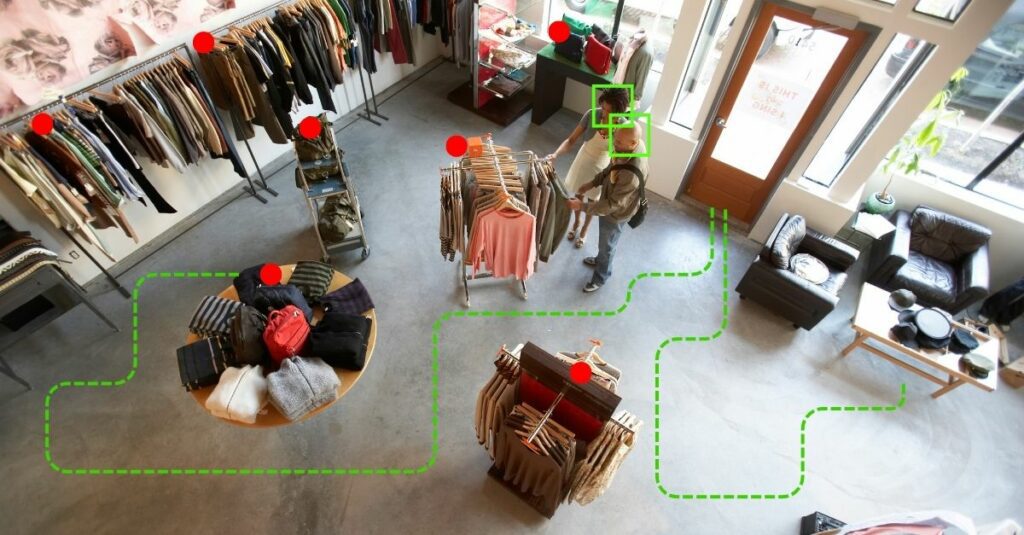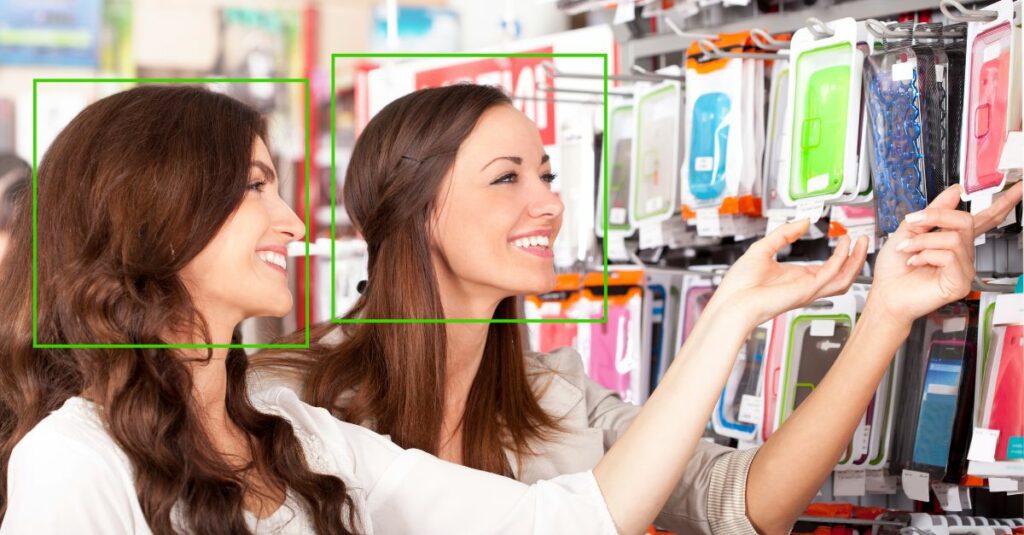Enhance Customer Experience in Retail with AI Video Analytics

Overview of AI Video Analytics in Retail
Definition and Importance of AI Video Analytics
AI video analytics involves the use of artificial intelligence to analyze video footage, providing valuable insights into customer behavior and store operations. This technology is crucial for modern retailers aiming to enhance customer experience and optimize their operations.
The Evolution of Retail Technology and AI Integration
Retail technology has evolved significantly, with AI integration playing a pivotal role. From inventory management to customer engagement, AI video analytics is transforming the retail landscape.

Current Trends in Retail and Customer Experience
Shifts in Consumer Behavior
Consumer behavior is continuously changing. Today’s shoppers demand personalized experiences and seamless interactions, making the adoption of advanced technologies imperative for retailers.
The Role of Technology in Modern Retail
Technology, particularly AI, is at the forefront of modern retail strategies. It enables retailers to understand customer preferences, streamline operations, and provide exceptional service.
Understanding AI Video Analytics

What is AI Video Analytics?
Explanation of AI Video Analytics Technology
AI video analytics leverages machine learning algorithms to process and analyze video data in real time. This technology can identify patterns, detect anomalies, and provide actionable insights.
Key Components and Functionalities
Key components of AI video analytics include data collection, processing, and analysis. The system utilizes cameras, sensors, and software to monitor and interpret video footage.
How AI Video Analytics Works
Data Collection and Processing
AI video analytics systems collect data through cameras and sensors. This data is then processed using advanced algorithms to extract meaningful insights.
Machine Learning Algorithms and Real-Time Analysis
Machine learning algorithms enable real-time analysis of video footage. These algorithms can recognize specific behaviors, track movement, and predict trends, facilitating immediate action.
Benefits of AI Video Analytics in Retail
Enhancing Customer Engagement
Personalized Shopping Experiences
AI video analytics allows retailers to create personalized shopping experiences by understanding customer preferences and behaviors. This leads to increased customer satisfaction and loyalty.
Targeted Marketing and Promotions
Retailers can use AI video analytics to design targeted marketing campaigns. By analyzing customer data, they can tailor promotions to specific audiences, improving conversion rates.
Improving Store Layout and Design
Heat Mapping and Customer Flow Analysis
AI video analytics provides insights into customer flow and store hotspots through heat mapping. This helps retailers optimize store layouts to enhance the shopping experience.

Optimizing Product Placement and Store Layout
With AI video analytics, retailers can strategically place products and design store layouts to maximize visibility and sales, ensuring a smoother customer journey.
Boosting Security and Loss Prevention
Real-Time Threat Detection
AI video analytics enhances security by detecting threats in real time. This includes identifying suspicious activities and alerting staff to potential issues.
Reducing Shoplifting and Fraud
The technology helps reduce shoplifting and fraud by monitoring store activity and recognizing unusual behaviors, leading to prompt intervention.

Operational Efficiency
Staff Management and Productivity
AI video analytics aids in staff management by analyzing foot traffic and customer interactions. This ensures optimal staff allocation and improves productivity.

Inventory Management and Demand Forecasting
By analyzing purchasing patterns, AI video analytics helps retailers manage inventory efficiently and forecast demand accurately, reducing stockouts and overstock situations.
Real-World Applications
Personalized Marketing Campaigns
Tailoring Promotions Based on Customer Behavior
AI video analytics enables the creation of personalized marketing campaigns by analyzing customer behavior and preferences, leading to more effective promotions.

Case Studies of Successful Campaigns
Numerous retailers have successfully implemented AI-driven campaigns, resulting in increased customer engagement and sales.
Optimizing In-Store Experience
Enhancing Customer Service Through Staff Allocation
Retailers can improve customer service by using AI video analytics to allocate staff where they are needed most, ensuring customers receive timely assistance.
Improving Checkout Efficiency
AI video analytics can streamline the checkout process by predicting peak times and optimizing cashier allocation, reducing wait times.

Interactive Displays and Smart Shelves
Engaging Customers with Interactive Technology
Interactive displays and smart shelves, powered by AI video analytics, engage customers and provide real-time information, enhancing the shopping experience.
Real-Time Inventory Updates and Pricing
These technologies offer real-time inventory updates and dynamic pricing, ensuring customers have access to the latest product information and promotions.
Queue Management Systems

Reducing Wait Times with AI-Powered Solutions
AI video analytics helps manage queues by predicting wait times and suggesting optimal staff allocation, improving overall customer satisfaction.
Enhancing Overall Customer Satisfaction
By reducing wait times and improving service efficiency, AI video analytics significantly enhances customer satisfaction.
Integrating AI Video Analytics with Existing Systems

Ensuring Compatibility and Seamless Integration
Seamless integration with existing systems is crucial for maximizing the benefits of AI video analytics. Retailers should ensure compatibility to avoid disruptions.
Overcoming Common Implementation Challenges
Implementing AI video analytics can pose challenges, such as data privacy concerns and technical complexities. Addressing these issues is essential for a smooth rollout.
Data Privacy and Security Concerns

Addressing Customer Privacy Issues
Retailers must address customer privacy issues by implementing robust data protection measures and being transparent about data usage.
Ensuring Compliance with Data Protection Regulations
Compliance with data protection regulations is essential for building customer trust and avoiding legal issues. Retailers should adhere to relevant laws and standards.
Measuring Success

Key Performance Indicators (KPIs) for AI Video Analytics
Metrics to Track for Success
Retailers should track metrics such as customer satisfaction, sales growth, and operational efficiency to measure the success of AI video analytics.
Analyzing Data to Drive Continuous Improvement
Regularly analyzing data helps retailers identify areas for improvement and make data-driven decisions to enhance their operations.
Case Studies of Successful AI Video Analytics Implementation

Examples from Leading Retail Brands
Leading retail brands have successfully implemented AI video analytics, resulting in improved customer experiences and operational efficiencies.
Lessons Learned and Best Practices
These case studies offer valuable lessons and best practices for other retailers looking to adopt AI video analytics.
Predicted Trends and Developments
Future Applications and Use Cases
Future applications of AI video analytics may include more sophisticated customer insights and enhanced automation, providing even greater value to retailers.
Long-Term Impact on the Retail Industry
The long-term impact of AI video analytics on the retail industry will be profound, leading to more efficient operations and superior customer experiences.
Frequently Asked Questions (FAQs)
AI video analytics offers numerous benefits, including enhanced customer engagement, improved store layouts, and increased security.
By providing personalized experiences and efficient service, AI video analytics significantly enhances customer satisfaction.
AI video analytics can be cost-effective for small retailers by optimizing operations and reducing losses, leading to long-term savings.
Retailers must implement robust data protection measures to safeguard customer data and comply with regulations.
Challenges include data privacy concerns, technical complexities, and the need for seamless integration with existing systems.
Yes, AI video analytics can be integrated with existing systems, provided compatibility is ensured.
The future of AI video analytics in retail includes advancements in technology and expanded use cases, driving further innovation.
Conclusion
Summarizing the Impact of AI Video Analytics on Retail
AI video analytics is transforming retail by enhancing customer experiences and optimizing operations. Its potential to revolutionize the industry is immense.
The Transformative Potential of AI in Enhancing Customer Experience
By leveraging AI video analytics, retailers can offer personalized experiences, improve efficiency, and stay ahead in a competitive market.
